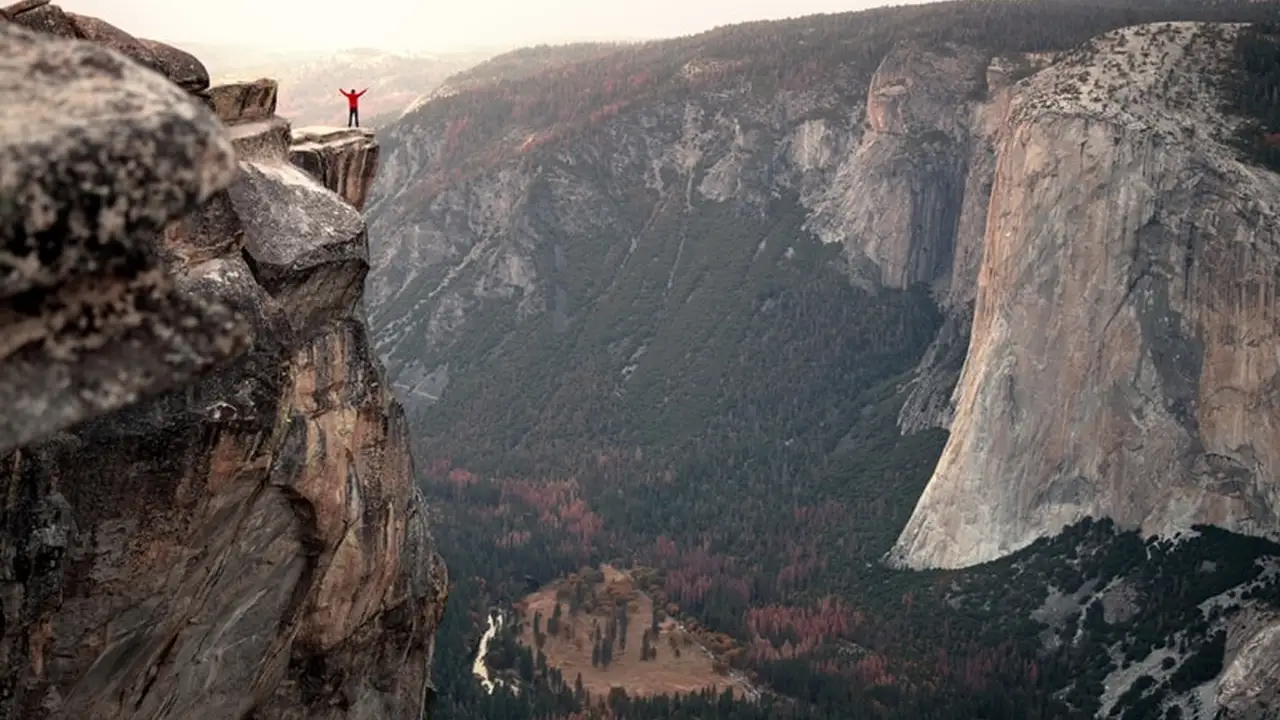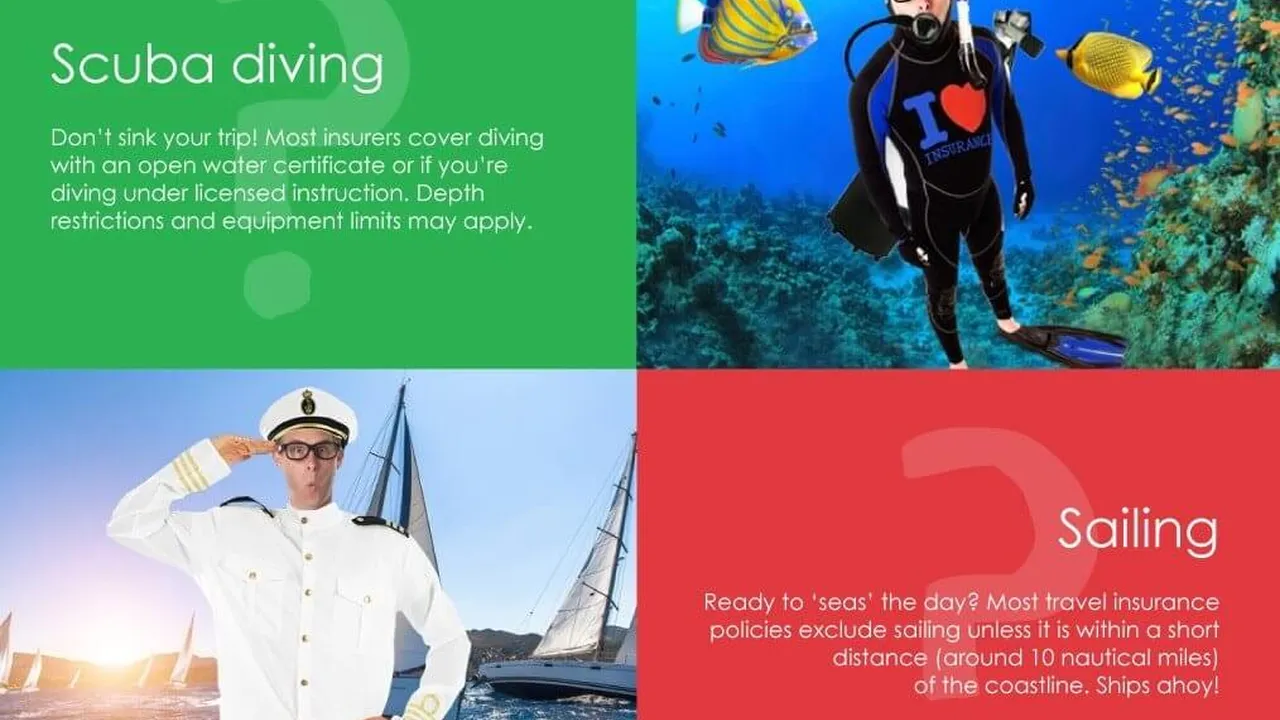Best Climbing Destinations in the US and Their Insurance Needs
Planning a climbing trip in the US? Some areas require specific insurance. We list the best destinations and their insurance needs, so you can be prepared.

Introduction to Climbing Destinations and Insurance
So, you're itching to hit the rocks and scale some epic cliffs in the US? Awesome! But before you pack your gear and head out, let's talk about something crucial: climbing insurance. Yeah, it's not the most thrilling topic, but trust me, it can save you a massive headache (and a lot of money) if things go sideways. Different climbing areas have different risk levels, and some even require specific types of insurance. This guide will walk you through some of the best climbing destinations in the US and what you need to know about their insurance requirements.
Why Climbing Insurance is Essential
Okay, let's be real. Climbing is inherently risky. Whether you're sport climbing, trad climbing, bouldering, or mountaineering, accidents happen. A fall, a rock slide, a sudden change in weather – these things can lead to injuries, evacuations, and hefty medical bills. Regular health insurance might not cover everything, especially if you're climbing in remote areas. That's where climbing insurance comes in. It can cover:
- Medical Expenses: Treatment for injuries sustained while climbing.
- Emergency Evacuation: Helicopter rescues can cost a fortune!
- Gear Replacement: If your expensive climbing gear gets damaged or lost.
- Trip Cancellation/Interruption: If you have to cancel or cut your trip short due to injury or illness.
Best US Climbing Destinations and Their Insurance Needs
Let's dive into some of the most popular climbing spots in the US and what you need to know about insurance for each.
Yosemite National Park, California: Big Walls and Big Risks
Yosemite is legendary. Home to iconic big walls like El Capitan and Half Dome, it attracts climbers from around the world. However, climbing here comes with significant risks. Long falls, rockfall, and the sheer remoteness of some climbs mean that comprehensive insurance is a must.
Insurance Needs:
- High Medical Coverage: Accidents can be severe. Aim for at least $100,000 in medical coverage.
- Emergency Evacuation: Helicopter rescues are common in Yosemite. Make sure your policy covers this.
- Search and Rescue: Ensure your policy covers search and rescue operations.
Red Rock Canyon, Nevada: Sport Climbing Paradise
Red Rock Canyon is a sport climber's dream, with thousands of bolted routes offering a variety of grades. While the risks are generally lower than in Yosemite, accidents still happen. Plus, the desert environment can present its own challenges.
Insurance Needs:
- Medical Coverage: Sufficient coverage for injuries like sprains, breaks, and cuts. $50,000 is a good starting point.
- Emergency Evacuation: While less common than in Yosemite, helicopter rescues are still possible.
- Trip Interruption: If you get injured and can't climb for the rest of your trip.
Indian Creek, Utah: Cracks for Days
Indian Creek is famous for its splitter cracks – long, continuous cracks that require specialized gear and techniques. This area is remote and the climbing is physically demanding, so insurance is essential.
Insurance Needs:
- Medical Coverage: The remote location means medical care can be expensive. $75,000 or more is recommended.
- Emergency Evacuation: Helicopter rescues are possible due to the remoteness.
- Gear Protection: Protect your expensive crack climbing gear from damage or loss.
New River Gorge, West Virginia: Sport and Trad Climbing Galore
The New River Gorge offers a mix of sport and trad climbing on sandstone cliffs. While not as remote as some other destinations, the potential for falls and injuries is still present.
Insurance Needs:
- Medical Coverage: Sufficient coverage for common climbing injuries. $50,000 should suffice.
- Trip Interruption: If you have to cut your trip short due to injury.
- Personal Liability: If you accidentally injure someone else.
Rocky Mountain National Park, Colorado: Alpine Adventures
Rocky Mountain National Park offers a diverse range of climbing, from bouldering to alpine mountaineering. The high altitude and unpredictable weather add to the risks, making comprehensive insurance a must.
Insurance Needs:
- High Medical Coverage: Altitude sickness and other medical issues can arise. Aim for at least $100,000.
- Emergency Evacuation: Helicopter rescues are common in the park's remote areas.
- Search and Rescue: Ensure your policy covers search and rescue operations.
Specific Product Recommendations and Comparisons
Alright, let's get down to brass tacks. Here are a few specific climbing insurance products that are worth checking out, along with their pros, cons, and price points.
World Nomads Explorer Plan: The All-Arounder
World Nomads is a popular choice for adventure travelers, and their Explorer Plan covers a wide range of activities, including climbing. They offer good medical coverage, emergency evacuation, and gear protection.
Pros:
- Comprehensive coverage for climbing and other adventure sports.
- 24/7 emergency assistance.
- Option to extend coverage while traveling.
Cons:
- Can be more expensive than some other options.
- Coverage limits may not be high enough for extreme adventures.
Typical Cost: $100-$200 for a 2-week trip, depending on your age and destination.
Best Use Case: General climbing trips, especially if you're combining climbing with other activities like hiking or backpacking.
IMG Signature Travel Insurance: Customizable Coverage
IMG offers a range of travel insurance plans, including the Signature Travel Insurance, which can be customized to include adventure sports coverage. This allows you to tailor your policy to your specific needs.
Pros:
- Highly customizable coverage options.
- Good medical coverage and emergency evacuation benefits.
- Competitive pricing.
Cons:
- Can be confusing to navigate the different coverage options.
- May require extra steps to add adventure sports coverage.
Typical Cost: $80-$150 for a 2-week trip, depending on your age, destination, and coverage options.
Best Use Case: Climbing trips where you want to customize your coverage to fit your specific needs and budget.
Global Rescue: The Emergency Specialist
Global Rescue specializes in emergency medical and security evacuation services. While not a traditional insurance company, they provide membership-based services that can be invaluable in remote climbing areas.
Pros:
- Expertise in emergency evacuation and rescue operations.
- Coverage for medical and security emergencies.
- Access to a network of medical and security professionals.
Cons:
- Doesn't cover medical expenses directly (requires a separate insurance policy).
- More expensive than traditional travel insurance.
Typical Cost: $329 per person per year for a basic membership.
Best Use Case: Remote climbing trips where emergency evacuation is a primary concern, especially in areas with limited medical facilities.
Divers Alert Network (DAN): Dive and Climb Coverage
While primarily known for diving insurance, DAN also offers coverage for climbing and other adventure sports. They have a strong focus on safety and education.
Pros:
- Coverage for climbing-related injuries and emergencies.
- Access to a network of medical professionals specializing in adventure sports.
- Focus on safety and education.
Cons:
- Coverage may not be as comprehensive as some other options.
- Premiums can be higher than some other providers.
Typical Cost: $150-$250 per year, depending on the plan and coverage options.
Best Use Case: Climbing trips, especially if you also participate in other adventure sports like diving.
Comparison Table
Here's a quick comparison table to help you visualize the key differences between these options:
| Provider | Coverage | Emergency Evacuation | Gear Protection | Price (2-week trip) |
|---|---|---|---|---|
| World Nomads Explorer | Comprehensive | Yes | Yes | $100-$200 |
| IMG Signature | Customizable | Yes | Optional | $80-$150 |
| Global Rescue | Emergency Services Only | Yes | No | $329/year |
| DAN | Climbing-Specific | Yes | No | $150-$250/year |
Factors to Consider When Choosing Insurance
Choosing the right climbing insurance can feel overwhelming, but here are a few key factors to keep in mind:
- Your Destination: Remote locations require more comprehensive coverage.
- Your Climbing Style: Big wall climbing requires higher medical and evacuation limits.
- Your Budget: Balance your coverage needs with your budget constraints.
- Pre-Existing Conditions: Make sure your policy covers any pre-existing medical conditions.
- Policy Exclusions: Read the fine print and understand what's not covered.
Tips for Finding the Best Deal
Here are a few tips for saving money on climbing insurance:
- Compare Quotes: Get quotes from multiple providers to find the best deal.
- Choose a Higher Deductible: A higher deductible can lower your premium.
- Look for Discounts: Some providers offer discounts for students, groups, or members of climbing organizations.
- Read Reviews: See what other climbers have to say about their experiences with different insurance providers.
Final Thoughts
Climbing insurance is an essential investment for any climber, regardless of skill level or experience. By understanding the risks involved and choosing the right insurance policy, you can protect yourself from financial hardship and enjoy your climbing adventures with peace of mind. So, do your research, compare your options, and get covered before you hit the rocks!
:max_bytes(150000):strip_icc()/277019-baked-pork-chops-with-cream-of-mushroom-soup-DDMFS-beauty-4x3-BG-7505-5762b731cf30447d9cbbbbbf387beafa.jpg)






